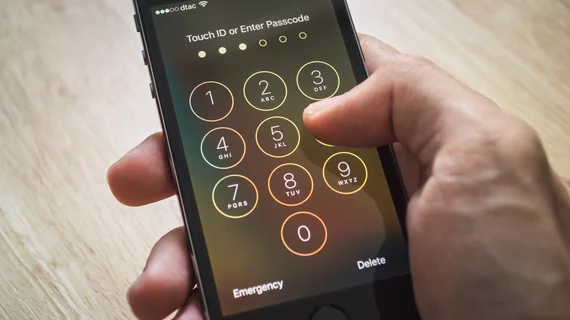The electromagnetic interference (EMI) emitted by cell phones may negatively impact gamma cameras, according to results of study published in the Journal of Medical Imaging and Radiation Sciences. Caution is necessary when using phones in the nuclear medicine suite.
A team of Australian researchers tested an Apple iPhone 6 against a thyroid phantom in four operating modes in three positions: A supine position directly on the detector against the superior aspect of the thyroid (position 1); a supine position posterior to the phantom (position 2); and elevated posteriorly by 10 centimeters behind the phantom (position 3).
For each of the three positions, a one-minute static planar image was taken on two gamma cameras. Images were acquired while the cell phone was in one of four modes: standby, continuously ringing, while answering a call and while playing music.
Upon visual inspection of the images, Melissa Dowling, of Charles Sturt University in Wagga Wagga, Australia, and colleagues found no change in quality, uniformity and resolution. But, all modes in position 1, besides standby, and all modes in positions 2 and 3 did create artifacts.
While there have been previously documented cases of cell phone-generated EMI interference, to date, there have only been three studies using gamma cameras, the authors noted. And unlike one previous case which demonstrated an observable effect on image quality, these results led Dowling et al. to believe there is a potential difference between applications of EMI shielding in “manufacturers, gamma camera generation or, indeed, associated with hardware for hybrid capability,” they wrote.
The study results should push nuclear medicine facilities to take cell phone precautions, but does not constitute the need for an outright ban.
“A complete ban of mobile devices in a nuclear medicine department is not warranted,” the researchers wrote.
“It is recommended, therefore, that mobile phones are not left with a patient during scanning even if the phone is out of the field of view,” the team added. “Staff should be mindful of carrying a mobile phone and in particular using a mobile phone in close proximity to a gamma camera during data acquisition."

